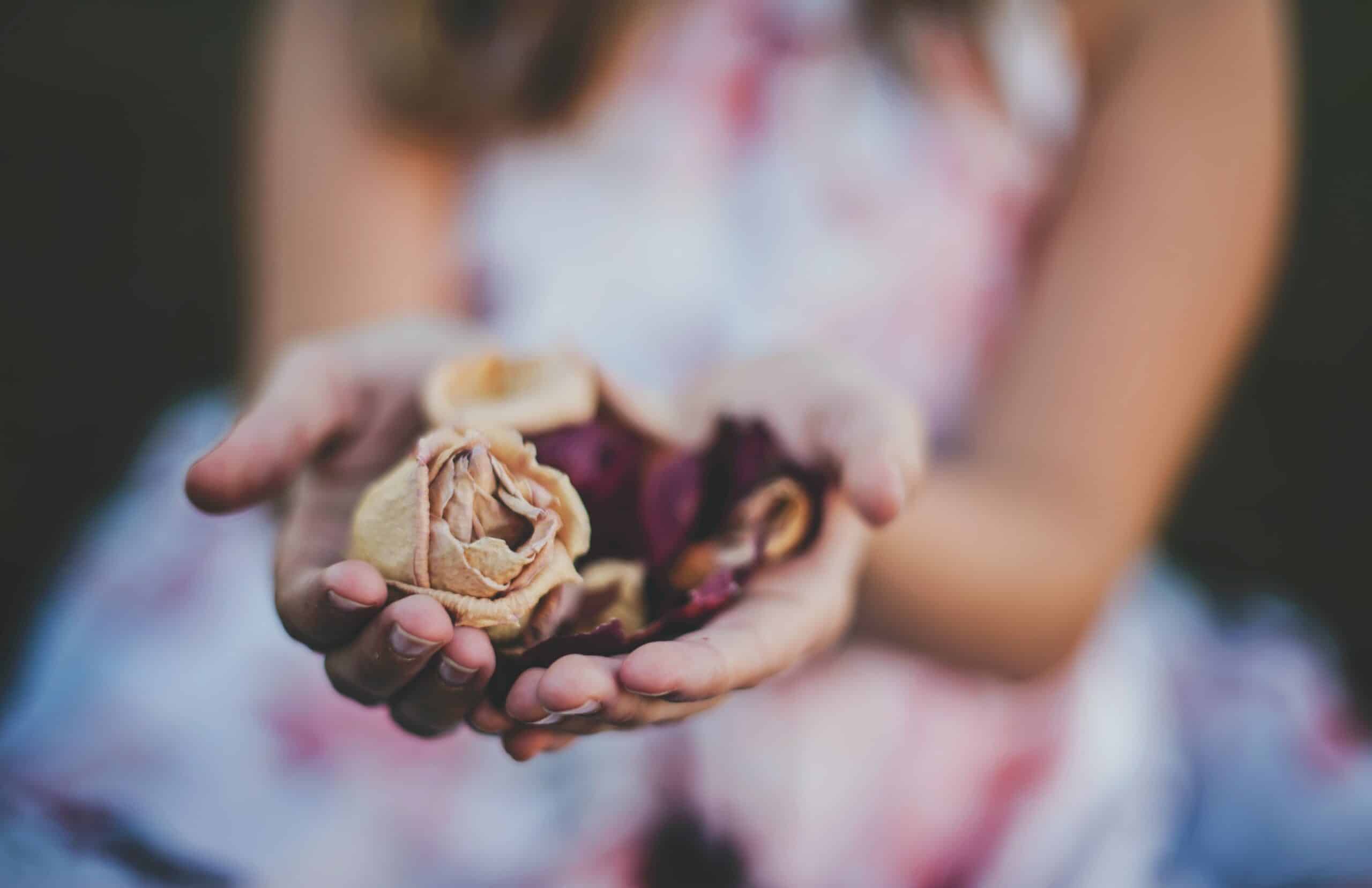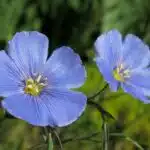It’s easy to think of flowers as a pretty gift or decoration, but did you know that each month has a designated birth flower? This tradition dates back centuries and symbolizes different meanings for each month. While it may seem outdated, learning about the birth flower for each month can be a fun way to learn more about the plants around us. And you don’t need to be superstitious to appreciate these blooms—even if you don’t believe in their symbolic power, they make great gifts and decorations!
While some people might think that assigning flowers to months is an outdated tradition, there’s actually a lot of symbolism behind each birth flower. Each one is believed to represent certain traits or emotions associated with that particular month. For example, the December birth flower is poinsettia and it stands for success—a fitting symbol for the start of the holiday season! Similarly, iris (the May birth flower) is thought to symbolize hope and courage.
It can be fascinating to take a deeper look into these special blossoms and discover what they mean for each month. By learning more about the history and symbolism behind them, we can gain insight into how our ancestors viewed these plants. In this article, we’ll explore the secret meaning behind each of these beautiful blooms—from January through December!
January: Carnation
Interestingly, the carnation is the most popular flower for Mother’s Day gifts according to a survey conducted by the Society of American Florists. This flower has been associated with strong emotions since ancient times and it has been a symbol of love, affection, and admiration.
The carnation is often referred to as the “flower of the gods” because its name comes from “corone,” which means “flower garland.” It is also thought to be the flower used to crown Roman emperors during their coronations.
In terms of symbolism, people have traditionally given carnations in a variety of colors to express different feelings. Red carnations are a sign of admiration and deep love for someone whereas white carnations are used to signify purity and luck. For this reason, the carnation is an excellent birth flower for January babies! Now let’s move on to February’s birth flower: violet.
February: Violet
Similar to January’s carnation, February is represented by the violet flower. This delicate bloom is a symbol of faithfulness, humility, and spiritual wisdom. Its small size belies its strength and durability – much like the month it’s attributed to!
Violets can often be found in the crevices of rocks or amongst cracks in pavements, something that makes them all the more special. Despite their fragility, they thrive in difficult conditions; a testament to their resilience and perseverance. Not only are violets beautiful but they also have a pleasant aroma which can be used in perfumes.
The dainty little violet speaks volumes about the nature of February: its subtlety, its beauty, and its stoic nature make it an ideal representation for this month of the year. It evokes a sense of wonderment with its charm and subtle presence – qualities that everyone should strive for!
March: Daffodil
What a coincidence – just as the weather in March starts to turn a bit warmer, daffodil blooms start to appear! This flower is the birth flower for the month of March and it has a special symbolism associated with it.
The daffodil symbolizes rebirth and new beginnings as it is one of the first flowers to bloom in springtime. It also symbolizes happiness, joy, and optimism. Additionally, this flower is associated with prosperity and fortune.
The daffodil is often seen as a reminder to enjoy life’s simple pleasures while looking ahead towards brighter futures. With its bright yellow hue, it adds much-needed color to a dull winter landscape. As we move into April, take some time to appreciate the beauty of the daffodil and all that it symbolizes before transitioning into another birth flower – the daisy!
April: Daisy
As a ray of sunshine, the daisy blooms in April, adding a burst of vibrant colour and joy to the garden. Symbolizing innocence and loyal love, the daisy is an ideal flower for April–a month that brings hope and optimism for longer days and warmer weather. The delicate petals of this classic flower bring a childlike wonder to any setting; its beauty is timeless.
In addition to its aesthetic value, the daisy’s secret message is one of faithfulness. It encourages us to stay strong during difficult times and remain devoted even when faced with adversity. This hearty bloom also reminds us to take time out of our busy lives to appreciate nature’s simple beauty and admire the world around us.
The daisy stands strong in April, a reminder of the strength we possess and how far we can go when we remain focused on what matters most. As we transition into May–and move toward the lily of the valley–we remember that no matter how hard life may seem at times, there is always something beautiful to look forward to.
May: Lily Of The Valley
What does the lily of the valley represent? This delicate flower is associated with sweetness, humility, and a return to happiness. It’s also widely known as a symbol of May’s birth month.
The lily of the valley is incredibly unique in comparison to other flowers. Its bell-shaped white flowers dangle from one stem and bloom in early spring. It has a very distinct aroma that many find delightful and calming. As its meaning suggests, it can be seen as a reminder of joy and hope for anyone born in May.
This flower is not only beautiful but also serves practical purposes such as being used to make perfumes or even tea. What’s more, it’s believed that placing this flower beneath your pillow at night will bring you sweet dreams! As we transition into June, let us look forward to the beauty that the rose has to offer.
June: Rose
The vivid beauty of the birth flowers for each month of the year has captivated people for centuries. But, what is the secret meaning behind each flower? Could it be that in June, the vibrant rose has a special significance? As we explore this question, let’s take a closer look at the majestic flower that blossoms in June.
The rose is an iconic symbol of love and admiration. Its velvety petals and subtle scent make it an ideal gift to show someone how much they mean to you. The color of the rose also has a unique meaning; red roses signify passion and romance while pink roses represent innocence and joy. With all these distinct features, it’s no surprise why the rose is held in such high regard as a representation of love and appreciation.
As this stunning flower blooms during the month of June, it serves as a reminder to cherish those around us who bring us so much joy. Whether giving one away or simply admiring its beauty from afar, we can appreciate the timeless symbolism associated with this magnificent flower. With its bold colors and captivating fragrance, there’s no denying that roses are truly breathtaking works of art.
July: Larkspur
The seventh month of the year, July, brings a unique flower to represent it—larkspur. This beautiful flower is full of symbolism and meaning. Its purple petals symbolize strong emotions like first love or heartfelt attachment. The tall spires of the larkspur signify an ardent attachment that is both lofty and enduring.
This flower can also be used to show appreciation for someone’s hard work and effort. When presented with this gift, the recipient will know that they are admired and appreciated for their dedication. Similarly, it can be used to express gratitude for loyalty and support throughout difficult times.
The larkspur blooms in summer, so sending this flower in July is a great way to celebrate the season while expressing meaningful sentiments like admiration or appreciation. It’s a perfect way to show how much you care about someone by giving them this special bloom!
August: Gladiolus
August’s birth flower is the gladiolus, a stunningly tall and vibrant bloom. It symbolizes strength of character, honor, and moral integrity. With its wide array of colors, it’s no wonder why this flower also stands for infatuation!
Gladioli come in a wide range of sizes and can reach up to six feet in height. They’re typically planted outdoors in the late springtime when the ground is warmer. A single plant can produce up to seven flowers at once, each one boasting unique hues. Additionally, gladioli are known for their long-lasting blooms that may remain vibrant for weeks at a time.
With its strong symbolism and beauty, it’s no surprise that the gladiolus has been adopted as August’s birth flower. Whether given as a gift or admired in the garden, these stunning blooms are sure to bring joy to any recipient – not to mention a reminder of inner strength and courage! Their cheerful presence is sure to be enjoyed throughout the summer months ahead. As we move into September, another beautiful birth flower awaits: the aster!
September: Aster
The aster is like a star in the night sky, its petals reaching up and out in all directions. Its vibrant colors and intricate design make it stand out from the other flowers of the season. As the birth flower for September, asters are symbolic of patience and daintiness.
Aster blooms come in various colors such as pinks, purples, and whites. They can be seen on the ends of stems that reach upwards to the sky. Representing faith, love, and wisdom, asters are often found in bouquets or gifted as token of appreciation for a special moment shared between two people.
As a reminder to take your time and appreciate life’s little moments, an aster is the perfect flower to have in your garden or share with someone special this September. A gift of an aster will surely bring joy to any recipient’s heart. Onward we go into October where marigolds will bloom with fiery hues of orange and yellow.
October: Marigold
The tenth month of the year, October, brings with it the marigold as its birth flower. Marigolds have long been associated with feelings of admiration and joy. They are a symbol of strong optimism and creativity, and are often used to bring good luck or to ward off bad vibes. Their bright yellow and orange petals make them a perfect addition to any garden or bouquet.
The marigold is also known for its medicinal properties, containing many vitamins and minerals that can be beneficial in treating illnesses such as skin infections, fever, sore throat, and even some kinds of cancer. It has been used for centuries in traditional medicine around the world for these purposes.
Not only does the marigold symbolize optimism and creativity, but it also provides medicinal benefits to those who use it. Its unique combination of beauty and usefulness makes it an ideal birth flower for October babies! Moving on from October’s birth flower, November brings us the Chrysanthemum – a symbol of cheerfulness and friendship.
November: Chrysanthemum
November’s birth flower, the chrysanthemum, is one of the oldest flowering plants in existence. In fact, it has been around for about 2,500 years and is believed to have originated in China and Japan. Not only is this flower incredibly hardy and resilient to weather extremes, it also offers a unique range of colors from white to dark purple.
The chrysanthemum symbolizes joy and beauty. It has also traditionally been used to represent long life and fidelity. One interesting statistic is that the Japanese Imperial family use a specific type of chrysanthemum as their official crest. This chrysanthemum crest is even printed on Japanese passports!
Not surprisingly, with its rich symbolism, it’s no wonder that the chrysanthemum was chosen as November’s birth flower. Its beauty adds a special touch to any occasion and also provides a meaningful way of showing love and appreciation. With its strong connection to loyalty and long life, the Chrysanthemum serves as an inspiring reminder of all that one can achieve when they are dedicated to something important. As we transition into December, let us keep these values close at heart when we look at the Poinsettia – December’s birth flower.
December: Poinsettia
The twelfth month of the year brings with it a birth flower that is as festive as the season itself. The poinsettia is December’s birth flower, and its bright colors of red, pink and white make it an excellent choice to ring in the New Year. These plants have been closely associated with Christmas for centuries, although their origins are much older than that.
Though they may appear delicate, poinsettias are actually quite hardy. They can survive short periods of drought and still retain their vibrant colors. This combination of strength and beauty make them a fitting symbol for those born in December who possess both inner and outer strength while also radiating warmth and kindness to those around them.
Despite its modern association with Christmas, the poinsettia has a history spanning thousands of years. It was first discovered by Spanish explorers in Mexico in the 16th century, where it was used for medicinal purposes as well as decoration. Its popularity has only grown since then, making it a beloved part of holiday celebrations all over the world. With such rich symbolism behind it, the poinsettia serves as more than just a seasonal decoration – it’s a reminder of the power we each possess to overcome challenges and bring joy to those around us. As we move into the next section about meanings behind each birth flower, let’s take a closer look at what these plants represent for those born in December.
Meanings Behind Each Birth Flower
The meanings behind each birth flower can be quite profound. For example, the January birth flower, carnation, is believed to represent a mother’s love and admiration. As such, it has become a popular gift for mothers on special occasions like Mother’s Day.
Likewise, many of the other birth flowers carry symbolic connotations that go beyond their physical beauty. The June birth flower—the rose—is often seen as a symbol of love, while the August birth flower—the gladiolus—symbolizes strength and integrity. Similarly, the November birth flower—the chrysanthemum—represents joy and cheerfulness.
In this way, each month’s birth flower holds its own special significance that speaks to its recipient. By understanding these unique meanings behind them, you can find ways to incorporate them into your garden or use them as gifts to show appreciation for loved ones.
How To Incorporate Birth Flowers Into Your Garden
From the spectacularly stunning snowdrop of January to the delicately delightful daisy of December, birth flowers are a beautiful and meaningful way to celebrate each month of the year. But why stop there? With an eye for creativity and a heart for tradition, you can easily incorporate these special blooms into your garden!
Take it to the next level by planning a full-on floral extravaganza! Start by mapping out where each flower will go. Then, choose different varieties that fit your style and climate. Whether you opt for exuberant hybrids or classic natives, let your birth flower vision come alive!
Make sure to give each bloom its own space in your outdoor sanctuary. Incorporate decorative elements like stepping stones, birdbaths, and trellises to create a unique atmosphere around each flower. With a little bit of love and care, these gorgeous blooms will bring beauty and meaning to your garden for years to come!
Caring For Birth Flowers
Nobody ever said caring for flowers was easy—but it’s especially hard when you’re taking care of birth flowers! While these blooms symbolize something special, they still need some TLC to keep them looking beautiful. Who knew that such a simple act could have so much meaning behind it?
Contrary to what you might think, caring for birth flowers doesn’t take a ton of effort or time. All they really need is the basics: regular watering and occasional pruning. If you want to get creative, you can try adding fertilizer or potting soil to help your plants thrive. Additionally, make sure that your flowers are in an area with plenty of sunlight and airflow—this will help them stay healthy and vibrant all year round.
It’s important to remember that caring for birth flowers isn’t just about keeping them alive—it’s also about celebrating life and honoring loved ones. As you tend to your plants, take a few moments to appreciate their beauty and reflect on why they mean so much to you. Whether its a reminder of childhood memories or the bond between two family members, these small gestures can go a long way in bringing joy into your home.
Frequently Asked Questions
What Are The Traditional Meanings Associated With Each Birth Flower?
Birth flowers have long been used to express feelings and wishes, in addition to being symbols of luck or good fortune. Each month has its own flower with a different associated meaning, and knowing these meanings can help us find the perfect bouquet for any occasion.
Take January’s birth flower, the carnation. Carnations are associated with admiration and love, making them the ideal choice for someone you care about deeply. Similarly, June’s roses signify love, beauty, and passion – an excellent gift to show your devotion to a loved one.
On the other hand, some of these flowers can also symbolise sadness and loss. November’s chrysanthemums represent grief, while August’s gladiolus communicate strength in times of adversity. Knowing these traditional meanings can help us pick the perfect flower for our loved ones during difficult times.
From happy occasions like birthdays to somber ones such as funerals – having knowledge of the symbolic meanings behind each birth flower could help us choose just the right gift or bouquet to convey our thoughts and wishes at exactly the right moment.
Are There Any Other Flowers Associated With The Birth Months?
It’s no secret that each month of the year has its very own birth flower, but did you know there are other flowers associated with the birth months too? It may come as a surprise, but many cultures have their own traditional meanings and symbols tied to different blooms. Let’s take a look at what these flowers represent and how they differ from the more commonly known birth flowers.
This is where things can get interesting – different countries often have their own unique associations for particular plants. For example, in France, people see the forget-me-not as a symbol of true love and loyalty. In China, the water lily stands for elegance and purity. You can find various alternative birth flowers for each month depending on culture and geography.
Although alternative birth flowers might not be as well known, they can still make meaningful gifts or decorations. Whether you pick something based on traditional meanings or simply because it looks beautiful, these blooms are sure to bring joy to someone special – a perfect way to show your thoughtfulness and attention to detail.
How Can I Preserve The Birth Flowers To Keep Them For A Long Time?
Preserving the birth flowers to keep them for a long time can be an incredibly special and meaningful experience. Imagining each month’s flower gracefully standing in a vase, with its beautiful petals and mesmerizing scent, is a dream come true for many. To make this dream a reality, there are some steps that need to be taken.
First off, it’s important to choose the right flowers. Some flowers last longer than others when they’re cut and placed in water; daffodils, carnations, and daisies are some of the best varieties for long-term preservation. Additionally, you’ll want to buy your flowers from a trusted source so that you know they’re fresh and healthy when you get them.
The next step is to properly prepare the flowers for storage. Cut the stems about an inch below each blossom and remove any leaves that may have been left behind. Then place the stems in lukewarm water with flower food added, if available. This will help nourish the flower while keeping it hydrated and healthy-looking before arranging it into a vase or container of your choice. Finally, keep your flowers away from direct sunlight or heat sources as much as possible – these can cause wilting or discoloration over time.
By taking these precautions, you can ensure that each birth flower remains vibrant and fragrant for weeks on end!
Are There Any Other Uses For Birth Flowers Besides Gardening?
The birth flower of each month certainly comes with its own special meaning, but what are the other uses of these beautiful blooms? Irony alerts us to the fact that we often overlook the many possibilities that lie beyond simply gardening. From decorating our homes to creating gifts for loved ones, there is much more to these flowers than meets the eye.
These flowers can be used in a variety of creative ways. For instance, one could create a bouquet from their birth flower and give it as a present to someone special. You could also dry out some of the petals and use them to make potpourri or a natural dye for clothing. Additionally, adding them to your home décor is an easy way to make any space look more vibrant and alive.
With all these potential uses, it’s no wonder why these flowers have been treasured for centuries. It’s time we start recognizing how versatile they are and take advantage of all they have to offer! Whether it’s adding a few stems in a vase or pressing some petals into cards, there are so many exciting ways you can incorporate birth flowers into your life.
Are There Any Special Considerations I Should Take Into Account When Choosing Birth Flowers For Children?
When choosing birth flowers for children, it’s important to take into account any special considerations. After all, these gifts will be with them for a long time! But that doesn’t mean you should be afraid to choose the perfect birth flower – there are plenty of options that make great gifts for children.
First and foremost, consider the age of the child. For infants and young children, opt for something that is delicate and non-toxic. Certain types of lilies and roses may not be ideal because their pollen can cause skin irritation or breathing difficulties – so it’s best to err on the side of caution. Additionally, if you want to keep your gift a surprise, think about selecting something that won’t wilt too quickly.
Ultimately, when selecting a birth flower for a child, it’s important to think about how meaningful it might be for them in the future. Consider incorporating some symbolism into your choice – whether it’s a reminder of their childhood home or favorite color – this gesture will surely be appreciated as they grow older. And while some parents may worry that they’re not experts in botany or gardening, don’t fret! There are plenty of online resources available to help you find the perfect flower – whatever its meaning may be.
Conclusion
In conclusion, birth flowers can be a meaningful way to commemorate someone’s birth month. For each month of the year there is a designated flower that has a special meaning associated with it. Furthermore, there are other flowers that may be associated with a particular birth month, but the traditional ones carry a special significance. Preserving these flowers is not only possible, but also relatively easy to do if you take the time to learn the proper techniques. In addition to being used in gardening contexts, birth flowers can also be used for various craft projects or even just as decorations around the home. When choosing birth flowers for children, it is important to consider any existing allergies or sensitivities they may have and select appropriate options for them.
Interesting statistic: According to research from Harvard University, people who keep fresh cut flowers in their home report feeling more joy than those who do not – an increase of almost 40%. This goes to show how powerful and meaningful something like birth flowers can be when they are placed in your home!





























